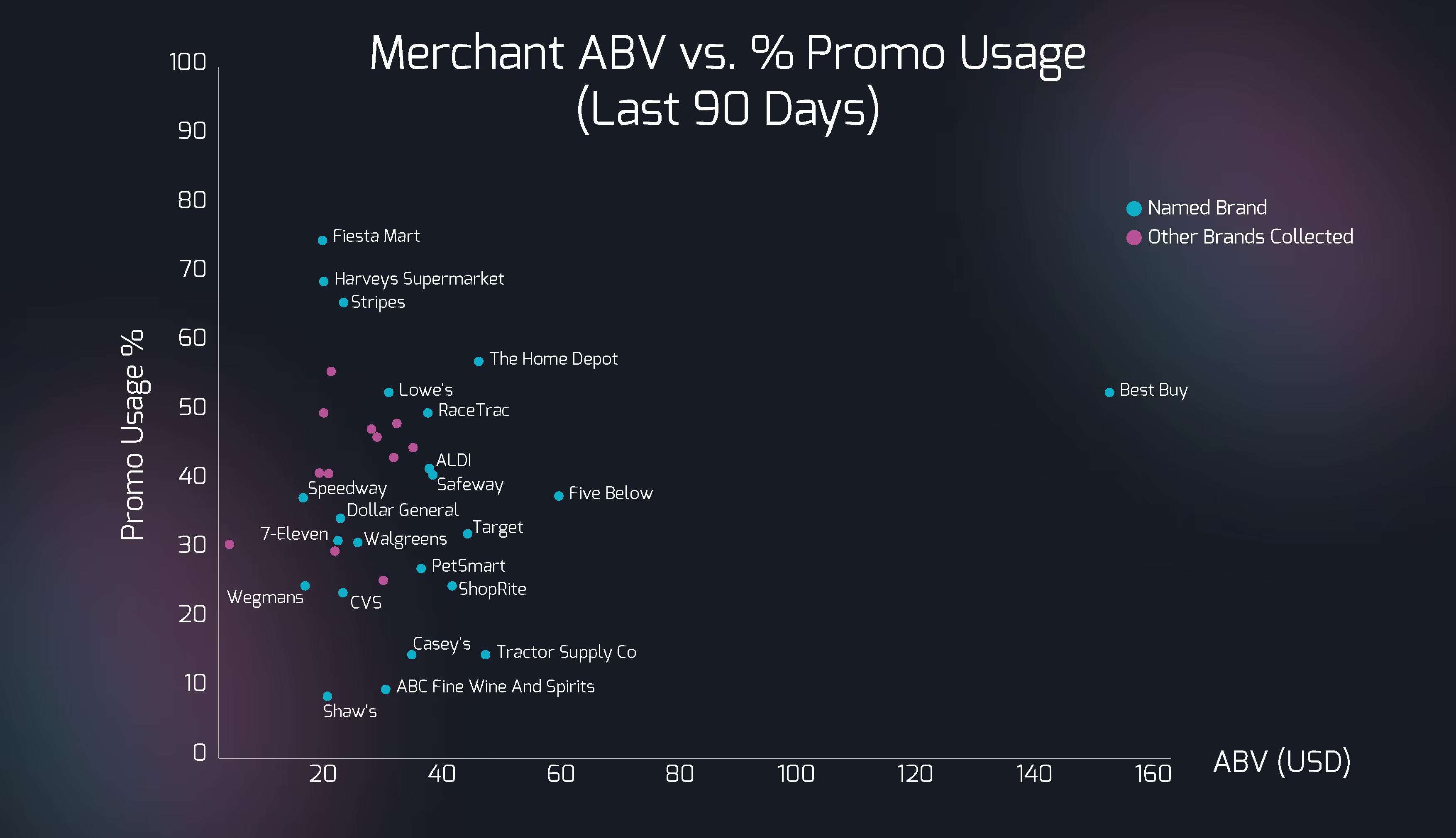As on-demand marketplaces expand beyond food delivery into broader q-commerce and convenience offerings, retailers are rethinking their digital strategies. Promotions, once seen as tactical levers, are increasingly part of long-term investment plays, used to boost order value, shift consumer habits, and compete for attention in crowded marketplaces.
But how effective are these promotions, really? And what do they reveal about how different retailers approach growth?
RealityMine’s recent analysis of retail activity on major delivery platforms shows that promo usage and order value don’t always align —and in some cases, heavy investment in discounting may point to deeper strategic shifts.

Scatter plot showing "Merchant ABV vs. % Promo Usage (Last 90 Days)". Contains dots for named brands and other brands, each labeled.
This scatter plot maps retailers by two key metrics over the past 90 days:
The result is a snapshot of how different merchants perform — and behave — within the same ecosystem. From high-ABV, low-promo brands to aggressive discounters with modest basket sizes, each position on the chart offers clues about strategy, pressure points, and possible intent.
One quadrant of the chart tells a bigger story: high promo usage paired with relatively low order value.
This combination often reflects a brand trying to shift behaviour by investing in discounts to increase transaction size or grow share. While the return on investment may not be immediate, the long-term aim is clear: move rightward on the chart. That is, raise ABV without relying so heavily on discounts.
For established players, this can be a source of concern. Competing against brands willing to absorb short-term losses in pursuit of future gains creates strategic tension, especially for those whose margins are tightly linked to promo performance. In some categories, it's not just about efficiency — it's about survival.
At the upper left of the chart, retailers like Fiesta Mart and Stripes Convenience show high promo usage but relatively low order values. This suggests a shopper base that may be highly price-sensitive or conditioned to wait for deals. In these categories, promos might be less about basket-building and more about driving any transaction at all.
At the opposite end, Best Buy stands out with the highest ABV by far — and relatively low promo usage. The nature of what this merchant sells may be the reason behind it, Best Buy may have strong brand equity or offer necessity-based purchasing (e.g., specific tech or hardware needs).
Brands like Target, CVS, and PetSmart fall in the middle: moderate ABV, moderate promo usage. This might reflect a more balanced strategy— where promotions are used tactically rather than universally. It also suggests a customer base that spans a wider range of motivations, from convenience to brand loyalty.
This dataset highlights an important nuance in retail behaviour: promotions don’t guarantee bigger baskets. Instead, promo effectiveness depends on the type of product, the brand’s positioning, and how shoppers perceive value.
High promo usage may signal a retailer’s dependence on incentives just to attract orders, not necessarily to boost spend. Meanwhile, high ABV with low promo reliance suggests brands that succeed without discounting heavily, likely due to necessity, perceived quality, or product exclusivity.
For retailers, this analysis underscores the importance of knowing when — and for whom — to deploy promotions. Blanket discounting might not be delivering the returns many expect. Strategic promo use, layered with shopper segmentation, could yield better outcomes.
For researchers and analysts, it’s a reminder that raw numbers like ABV don’t tell the full story. Behavioural context matters, and that’s exactly what real usage consumer data helps uncover.
RealityMine’s e-commerce data enables this kind of insight by capturing real consumer activity across apps, platforms, and time, helping brands and researchers move beyond guesswork to make smarter decisions.
Yes, promos still have a place in the toolkit but they’re not a one-size-fits-all solution. Understanding the relationship between discounts and shopper intent is key to designing more effective campaigns and building long-term value.
Want to understand how your brand compares, or how your customers really shop across digital platforms? Let’s talk.